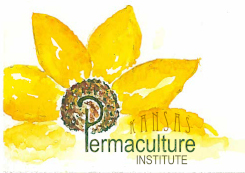"The Carbon Key: Soil Biology Builds Resilience in Regenerative Systems" was a talk by Dr. Kris Nichols at the No-Till on the Plains conference in Wichita in January 2019. Here are my notes:
- Farmers & ranchers have had to juggle many jobs as issues mount.
- Soil health has traditionally been defined in terms of its service to us.
- We used to think we knew only 10% of the soil life, but now it's more like 0.11%. We didn't know how much we didn't know.
- We are still losing nearly 2 billion metric tons/year of topsoil, down from a high of 3.
- But the root of the problem is also the solution: we need to get more carbon into the soil.
- A systems approach begins with maximizing photosynthesis.
- eco-functional intensification: living roots -> diversity -> soil cover -> no-till
- Feed soil like you're supposed to feed yourself: many small snacks, diverse diet.
- We grow the wrong plants. Corn is a tropical plant! We need something green in the ground all year.
- interactive carbon economy: plants trade carbon to microbes, predators reap nitrogen.
- reduce synthetic inputs (but gradually).
- Crop yield is not the bottom line. Profit is. Expensive inputs reduce profit.
- Synthetic nitrogen has always been <50% effective. Phosphate is only 30% effective.
- Arbuscular micorrhizal fungi can satisfy up to 90% of the N&P needs of plants with nothing to buy and no waste.
- Drought stress is actually malnutrition. We have no idea how much water a healthy plant needs, because all drought stress research is necessarily on unhealthy plants in unhealthy soil.
- Arthropods wound the plant so it produces stress response chemicals we need in our food. A plant without insect damage is less nutritious to us.
- Manage livestock for nutrient cycling. An animal that isn't on the land isn't doing its job.
- Grow cover crops for soil armor, and finally reduce tillage. No-till is the final step, not the first.
- Log in to post comments





Comments